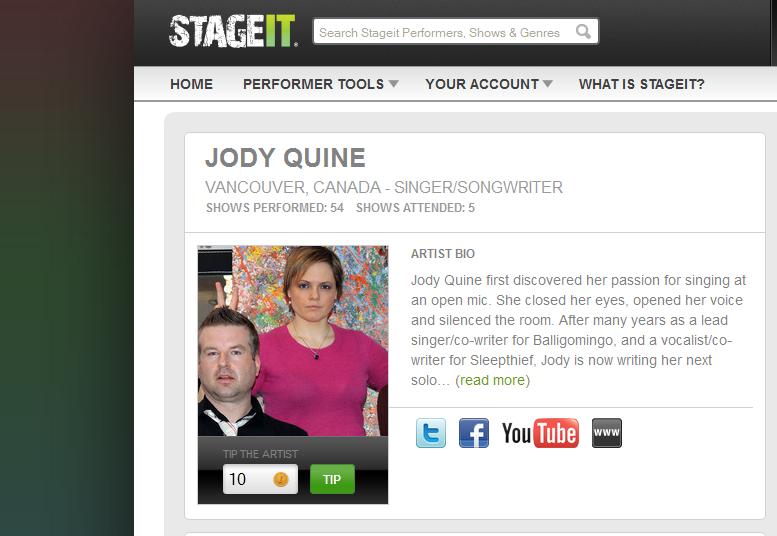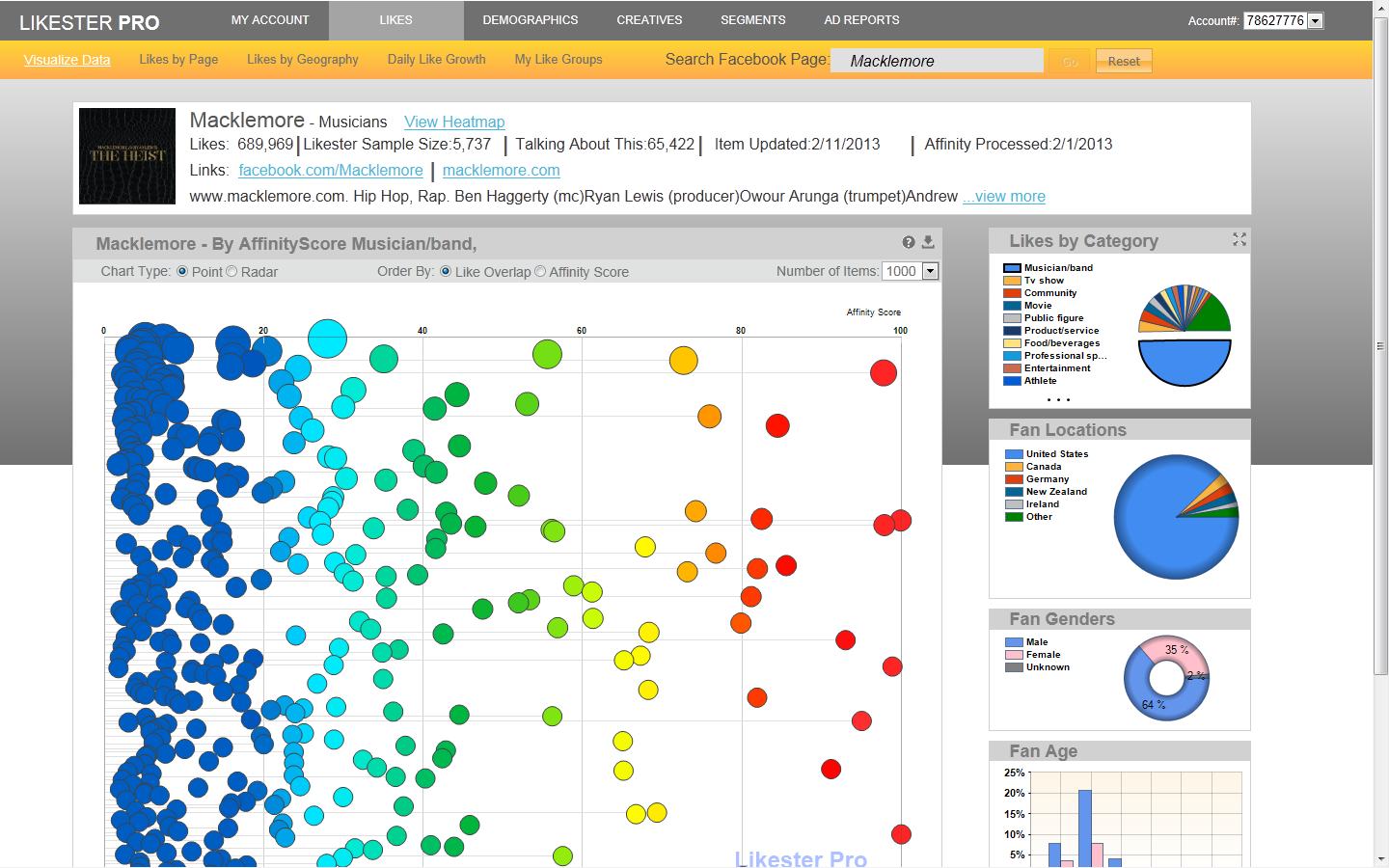I “met” Denver, CO singer and actress Su Charles (AKA SuCh) on one of the Grammy® Facebook pages, where she has been active posting and conversing with other musicians and sharing her music during this fall’s Grammy voting season. I was impressed with her single, “Sugar Maple”, from her 2014 album, Trial and Error, and the many YouTube views of her video (you can watch and listen to Sugar Maple on YouTube at the bottom of this post, where you can also find a link to SuCh’s music website and iTunes page. I also linked below to a lovely bio piece the Denver Post did for more background info).
2015 Social Media Checklist for Musicians
Featured image by scottchan for freedigitalphotos.net
I began teaching a social media certificate class this month to 31 adults in downtown Seattle at the University of Washington’s Continuing Education Program. I’m really enjoying it – the students are enthusiastic and operating all at different levels of social media expertise and experience. Creating material for a three hour class on a weekly basis is no walk in the park, but I love it so far! It’s an exercise in visual, rigorous, accountable, consistent long form weekly content creation.
At the same time, I’ve also been working with some fabulous musicians as a marketing consultant, helping them develop their marketing plans, define their music career business goals, and then execute against those goals.
AND I’ve also been trying to keep up with the fast paced and ever changing worlds of both social media and music. Oh, and then there’s the new set of songs Stevie and I are working on for 2015 release.
I got to thinking a few weeks ago about how to distill down the things I see as vital for musicians – and any small business owner – to attend to as part of their social media for the coming year. [Tweet “Here is what I would tell you to do in 2015 if you were my client”] So here is what I would tell you to do in 2015 with your social media if you were my music marketing client:
- Understand your primary social media business goals. Don’t jump into social media just because you feel you “need to be on social media.” Are you promoting a new album release, an event or tour? Is your primary goal to increase followers or Likes? Or are you trying to get the attention of bloggers, press or industry influencers? Are you trying to win a music contest or raise money via Kickstarter or Pledgemusic or some other platform? Is your goal to promote coupons or discounts to encourage fans to buy your music or merchandise directly from your website? Your goals will help determine both what social media channels to focus on, and what kinds of activities (posts) to engage in. Set some reasonable, concrete, realistic, numerical social media goals for 6 months and for a year from now – goals with numbers and a timeline. It’s easy to get lost, sidetracked and overwhelmed in social media. If you’re not aiming at something, you won’t know if you’ve succeeded. [Tweet “It’s easy to get lost, sidetracked and overwhelmed in social media.”]
- Know who your target market is. What are the basic demographics (age, sex, location, artists they like) for your super fans? If you don’t have a big fan base, research the demographics of bands you consider your competition. I also wrote a blog post on identifying your super fan that includes some great online research tools.
Musician Google Analytics: It’s Not Rocket Science
Knowing how to use online analytics tools is an important skill for DIY musicians. If you can learn how to play guitar, drums, or piano with two hands, you can do this. The more information you have about your audience, the better decisions you will make about where to focus your marketing efforts. You may decide to adjust your promotional strategy, to focus more on one particular social media channel, or to create a House Party tour to a particular geographical area based on what you learn by analyzing your online presence.
There are many different free tools you can use to gather analytics information. Most are individual tools designed to look at a specific online presence, like your website, Facebook fan page or Twitter followers. “Analytics for Musicians” by Make It In Music gives a good overview of analytics tools for these three: Google Analytics for your website, Insights on Facebook, and Hootsuite for analyzing Twitter.
This post describes how and why you might want to check out Google Analytics to understand the activity on your band website. Even if you are a bit of a technophobe, making the effort to personally understand what’s going on with your website is enlightening and empowering. Instead of just anecdotal conversations you might have with fans after a show, or arguments with your bandmates about which website pages are most important, analytics give you real and actionable information about how people are discovering and engaging with your music and your band. You won’t be held hostage to someone else, either, like a webmaster, relying on their busy schedule and waiting for them to give you information.
How Likester Helps Musicians (Or Anyone) Visualize Facebook Like Corellations
[An interview with Kevin McCarthy, CEO of the Seattle-based Facebook analytics company, Likester]
S: Kevin, thanks for talking with me today. In addition to the fact that you’re my stepson (full disclosure), you’re a succesful serial entrepreneur. You’ve started a new company called Likester (definitely not to be confused with Friendster). You and I were talking about Likester, and I had a few questions about how it might be useful for musicians or labels. I understand a little about Likester – it’s basically a giant database of Facebook “Like” data and some software that helps you visualize correlations between Facebook brand “Likes”, is that correct? And the idea is that this information can be used by marketers, presumably to better target their Facebook advertising to those Facebook users who are more likely to “Like”, and thus buy, their products? Tell me more about Likester – what is the basic idea behind the tool?
K: That is correct. Likester has tracked and organized over a billion Facebook “Likes” from millions of people. The basic idea behind Likester Pro is that you can learn a lot about your customers, the customers of your competition, or the fans of any Facebook Page out there.
StageIt 101: Creating An Intimate Experience
 It’s hard to tour – expensive, time consuming, and pretty much out of the question if you have kids or a full time job outside the music industry. But what’s an indie musician to do – you have to get out and promote your music, right?
It’s hard to tour – expensive, time consuming, and pretty much out of the question if you have kids or a full time job outside the music industry. But what’s an indie musician to do – you have to get out and promote your music, right?
I liken it to live internet porn for musicians, albeit generally G-rated and a much better value for the audience. Streaming your live music shows over the internet is one of the hottest ways musicians can boost their visibility, grow their fan base, and make a few dollars in the process, all from the relative comfort of their own living rooms. And neither they nor their fans have to pay a babysitter either. I’ve met quite a few musicians now who are putting on regular live performances via a streaming music service. There are several different platforms out there including StageIt, Ustream, LiveStream, Google+ Hangouts On Air, Skype, YouNow, Broadcast for Friends for Facebook, and Second Life Music. What are the relative advantages and disadvantages of each? I couldn’t find any articles that compared all the services, so I decided to try researching them myself and sharing what I’ve learned. In this article I’m going to cover the basics of StageIt.
My partner and I experimented last spring a bit with StageIt. We streamed two of our house concerts using it, and I found it quite fun. You start out by joining as a StageIt audience member, which is free. You can join by using your Facebook page, or by entering a StageIt name, email address and password. One advantage of StageIt is it’s dead simple to join. Once you are signed up as a member, you can sign up as a performer, which is a one-click action. To view a show, you purchase “notes,” a StageIt currency that translates 10 Notes = $1 US. To view a show, you purchase Notes in a minimum of 50 increments ($5 US). Notes are used to pay for tickets and to tip performers during the show (more on that later).
The Un-Virtuous Music Industry Business Cycle
 ***UPDATE: Google To Launch Music-Streaming Service (Market Watch, May 14, 2013). This could be a game-changer, as Google is a major infrastructure challenger to Apple. Also missing from my analysis below is Amazon, who could also become a major player, and does have a cloud-based music storage system today.
***UPDATE: Google To Launch Music-Streaming Service (Market Watch, May 14, 2013). This could be a game-changer, as Google is a major infrastructure challenger to Apple. Also missing from my analysis below is Amazon, who could also become a major player, and does have a cloud-based music storage system today.
***UPDATE: Apple announced a streaming music service on September 7, 2012, causing Pandora’s stock to fall precipitously. The impact of this service, which was also reported by the Wall Street Journal, is likely to be profound, although EricA Ogg of GigaOM speculates on whether Apple will succeed in this space given the relative lack of visibility of iMatch.***
It’s fall, the season when fruit ripens and leaves let loose and tumble to the ground. As I was walking my dog this morning, I was reminded of the stark difference between fruit and leaves. One is sweet and ripe, heavy with the burden and promise of life. The other, cast off like snakeskin, is the detritus of the season, dry and lifeless.
It’s the fall season in the music software industry as well. Every software business has predictable cycles for startups, and the music industry software startup cycle is no exception. The clock is ticking, and some music software businesses seem on the road to becoming lifeless, a step from being cast off from their investors like so many drying leaves. It’s not clear if any will bear the fruit – the financial returns – their investors were hoping for. It’s hard not to take as a warning the fact that projected 2012 Facebook revenues were downsized by $1B . Even this relatively successful consumer software platform continues to struggle to generate return on investment. Also in news this week, TuneCore founders Peter Wells and Jeff Price were ousted by the Board (read: major investors in the company take the reins, looking to change company direction to increase profitability). Slightly older news is that Spotify and Pandora are not yet close to profitable as of mid year 2012, and in fact, Spotify profitability appears to be moving in the wrong direction. Rhapsody was revived by absorbing Napster in a buy-in from Best Buy, and they are still owned almost 50% by RealNetworks, so theoretically they have deeper investor pockets. They are supposedly close to profitability, but their revenue and cost structures are less well understood. I’ll believe it when I see the numbers.




